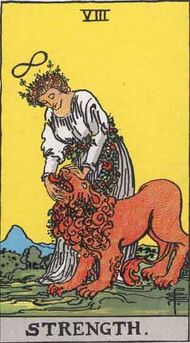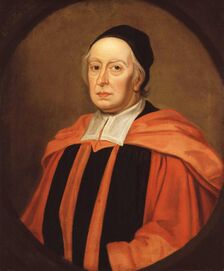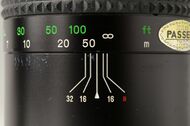Infinity symbol
 From HandWiki - Reading time: 10 min
From HandWiki - Reading time: 10 min
| [math]\displaystyle{ \infty }[/math] | |
|---|---|
Infinity symbol | |
| In Unicode | U+221E ∞ INFINITY (HTML ∞ · ∞) |
| Different from | |
| Different from | U+267E ♾ PERMANENT PAPER SIGN U+26AD ⚭ MARRIAGE SYMBOL |
The infinity symbol (∞) is a mathematical symbol representing the concept of infinity. This symbol is also called a lemniscate,[1] after the lemniscate curves of a similar shape studied in algebraic geometry,[2] or "lazy eight", in the terminology of livestock branding.[3]
This symbol was first used mathematically by John Wallis in the 17th century, although it has a longer history of other uses. In mathematics, it often refers to infinite processes (potential infinity) rather than infinite values (actual infinity). It has other related technical meanings, such as the use of long-lasting paper in bookbinding, and has been used for its symbolic value of the infinite in modern mysticism and literature. It is a common element of graphic design, for instance in corporate logos as well as in older designs such as the Métis flag.
Both the infinity symbol itself and several variations of the symbol are available in various character encodings.
History
The lemniscate has been a common decorative motif since ancient times; for instance it is commonly seen on Viking Age combs.[4]
The English mathematician John Wallis is credited with introducing the infinity symbol with its mathematical meaning in 1655, in his De sectionibus conicis.[5][6][7] Wallis did not explain his choice of this symbol. It has been conjectured to be a variant form of a Roman numeral, but which Roman numeral is unclear. One theory proposes that the infinity symbol was based on the numeral for 100 million, which resembled the same symbol enclosed within a rectangular frame.[8] Another proposes instead that it was based on the notation CIↃ used to represent 1,000.[9] Instead of a Roman numeral, it may alternatively be derived from a variant of ω, the lower-case form of omega, the last letter in the Greek alphabet.[9]
Perhaps in some cases because of typographic limitations, other symbols resembling the infinity sign have been used for the same meaning.[7] Leonhard Euler used an open letterform more closely resembling a reflected and sideways S than a lemniscate,[10] and even "O–O" has been used as a stand-in for the infinity symbol itself.[7]
Usage
Mathematics
In mathematics, the infinity symbol is typically used to represent a potential infinity.[11] For instance, in mathematical expressions with summations and limits such as
[math]\displaystyle{ \sum_{n=0}^{\infty} \frac{1}{2^n} = \lim_{x\to\infty}\frac{2^x-1}{2^{x-1}} = 2, }[/math]
the infinity sign is conventionally interpreted as meaning that the variable grows arbitrarily large towards infinity, rather than actually taking an infinite value, although other interpretations are possible.[12]
When quantifying actual infinity, infinite entities taken as objects per se, other notations are typically used. For example, [math]\displaystyle{ \aleph_0 }[/math] (aleph-nought) denotes the cardinal number representing the size of the set of natural numbers, and [math]\displaystyle{ \omega }[/math] (omega) denotes the smallest ordinal number which is larger than all natural numbers.
The infinity symbol may also be used to represent a point at infinity, especially when there is only one such point under consideration. This usage includes, in particular, the infinite point of a projective line,[13] and the point added to a topological space to form its one-point compactification.[14]
Other technical uses
In areas other than mathematics, the infinity symbol may take on other related meanings. For instance, it has been used in bookbinding to indicate that a book is printed on acid-free paper and will therefore be long-lasting.[15] On cameras and their lenses, the infinity symbol indicates that the lens's focal length is set to an infinite distance, and is "probably one of the oldest symbols to be used on cameras".[16]
Symbolism and literary uses

In modern mysticism, the infinity symbol has become identified with a variation of the ouroboros, an ancient image of a snake eating its own tail that has also come to symbolize the infinite, and the ouroboros is sometimes drawn in figure-eight form to reflect this identification—rather than in its more traditional circular form.[18]
In the works of Vladimir Nabokov, including The Gift and Pale Fire, the figure-eight shape is used symbolically to refer to the Möbius strip and the infinite, as is the case in these books' descriptions of the shapes of bicycle tire tracks and of the outlines of half-remembered people. Nabokov's poem after which he entitled Pale Fire explicitly refers to "the miracle of the lemniscate".[19] Other authors whose works use this shape with its symbolic meaning of the infinite include James Joyce, in Ulysses,[20] and David Foster Wallace, in Infinite Jest.[21]
Graphic design
The well-known shape and meaning of the infinity symbol have made it a common typographic element of graphic design. For instance, the Métis flag, used by the Canadian Métis people since the early 19th century, is based around this symbol.[22] Different theories have been put forward for the meaning of the symbol on this flag, including the hope for an infinite future for Métis culture and its mix of European and First Nations traditions,[23][24] but also evoking the geometric shapes of Métic dances,[25], Celtic knots,[26] or Plains First Nations Sign Language.[27]
A rainbow-coloured infinity symbol is also used by the autism rights movement, as a way to symbolize the infinite variation of the people in the movement and of human cognition.[28] The Bakelite company took up this symbol in its corporate logo to refer to the wide range of varied applications of the synthetic material they produced.[29] Versions of this symbol have been used in other trademarks, corporate logos, and emblems including those of Fujitsu,[30] Cell Press,[31] and the 2022 FIFA World Cup.[32]
Encoding
The symbol is encoded in Unicode at U+221E ∞ INFINITY[33] and in LaTeX as \infty: [math]\displaystyle{ \infty }[/math].[34] An encircled version is encoded for use as a symbol for acid-free paper.
The Unicode set of symbols also includes several variant forms of the infinity symbol that are less frequently available in fonts in the block Miscellaneous Mathematical Symbols-B.[45]
| Preview | Template:Charmap/showcharTemplate:Charmap/showcharTemplate:Charmap/showcharTemplate:Charmap/showchar | Template:Charmap/showcharTemplate:Charmap/showcharTemplate:Charmap/showcharTemplate:Charmap/showchar | Template:Charmap/showcharTemplate:Charmap/showcharTemplate:Charmap/showcharTemplate:Charmap/showchar | |||
|---|---|---|---|---|---|---|
| Unicode name | INCOMPLETE INFINITY | TIE OVER INFINITY | INFINITY NEGATED WITH VERTICAL BAR | |||
| Encodings | decimal | hex | decimal | hex | decimal | hex |
| Unicode | 10716 0 0 0 | U+29DC | 10717 0 0 0 | U+29DD | 10718 0 0 0 | U+29DE |
| UTF-8 | 226 167 156 0 0 0 | E2 A7 9C 00 00 00 | 226 167 157 0 0 0 | E2 A7 9D 00 00 00 | 226 167 158 0 0 0 | E2 A7 9E 00 00 00 |
| Numeric character reference | ⧜ |
⧜ |
⧝ |
⧝ |
⧞ |
⧞ |
| LaTeX[34] | \iinfin | \tieinfty | \nvinfty | |||
See also
- Aleph number
- History of mathematical notation
- Lazy Eight (disambiguation)
References
- ↑ Infinity and the Mind: The science and philosophy of the infinite. Boston, Massachusetts: Birkhäuser. 1982. p. 1. ISBN 3-7643-3034-1.
- ↑ Erickson, Martin J. (2011). "1.1 Lemniscate". Beautiful Mathematics. MAA Spectrum. Mathematical Association of America. pp. 1–3. ISBN 978-0-88385-576-8. https://books.google.com/books?id=LgeP62-ZxikC&pg=PA1.
- ↑ Humez, Alexander; Humez, Nicholas D.; Maguire, Joseph (1993). Zero to Lazy Eight: The Romance of Numbers. Simon and Schuster. p. 18. ISBN 978-0-671-74281-2. https://books.google.com/books?id=X429EAr8g4kC&pg=PA18.
- ↑ van Riel, Sjoerd (2017). "Viking Age Combs: Local Products or Objects of Trade?". Lund Archaeological Review 23: 163–178. https://journals.lub.lu.se/lar/article/view/21656. See p. 172: "Within this type the lemniscate (∞) is a commonly used motif."
- ↑ Wallis, John (1655). "Pars Prima" (in la). De Sectionibus Conicis, Nova Methodo Expositis, Tractatus. pp. 4. https://archive.org/details/bub_gb_03M_AAAAcAAJ.
- ↑ Scott, Joseph Frederick (1981). The mathematical work of John Wallis, D.D., F.R.S., (1616-1703) (2nd ed.). American Mathematical Society. p. 24. ISBN 0-8284-0314-7. https://books.google.com/books?id=XX9PKytw8g8C&pg=PA24.
- ↑ 7.0 7.1 7.2 Cajori, Florian (1929). "Signs for infinity and transfinite numbers". A History of Mathematical Notations, Volume II: Notations Mainly in Higher Mathematics. Open Court. pp. 44–48. https://archive.org/details/AHistoryOfMathematicalNotationVolII/page/n67.
- ↑ To Infinity and Beyond: A Cultural History of the Infinite. Princeton, New Jersey: Princeton University Press. 1991. p. 7. ISBN 0-691-02511-8. https://books.google.com/books?id=pMY9DwAAQBAJ&pg=PA7.
- ↑ 9.0 9.1 "Chapter 6: Labelling the infinite". A Brief History of Infinity: The Quest to Think the Unthinkable. Constable & Robinson Ltd. 2003. ISBN 978-1-84119-650-3.
- ↑ (Cajori 1929) displays this symbol incorrectly, as a turned S without reflection. It can be seen as Euler used it on page 174 of Euler, Leonhard (1744). "Variae observationes circa series infinitas" (in la). Commentarii Academiae Scientiarum Petropolitanae 9: 160–188. http://eulerarchive.maa.org/docs/originals/E072.pdf.
- ↑ "Infinity: Where God Divides by Zero". Cosmic Imagery: Key Images in the History of Science. W. W. Norton & Company. 2008. pp. 339–340. ISBN 978-0-393-06177-2. https://books.google.com/books?id=uRg6iN10JCIC&pg=PA339.
- ↑ Shipman, Barbara A. (April 2013). "Convergence and the Cauchy property of sequences in the setting of actual infinity". PRIMUS 23 (5): 441–458. doi:10.1080/10511970.2012.753963.
- ↑ Perrin, Daniel (2007). Algebraic Geometry: An Introduction. Springer. p. 28. ISBN 978-1-84800-056-8. https://books.google.com/books?id=Vn1yR9qPvlMC&pg=PA28.
- ↑ Infinite Dimensional Analysis: A Hitchhiker's Guide (3rd ed.). Springer. 2006. pp. 56–57. ISBN 978-3-540-29587-7. https://books.google.com/books?id=4vyXtR3vUhoC&pg=PA56.
- ↑ Zboray, Ronald J.; Zboray, Mary Saracino (2000). A Handbook for the Study of Book History in the United States. Center for the Book, Library of Congress. p. 49. ISBN 978-0-8444-1015-9. https://archive.org/details/handbookforstudy0000zbor/page/49.
- ↑ Crist, Brian; Aurello, David N. (October 1990). "Development of camera symbols for consumers". Proceedings of the Human Factors Society Annual Meeting 34 (5): 489–493. doi:10.1177/154193129003400512.
- ↑ Armson, Morandir (June 2011). "The transitory tarot: an examination of tarot cards, the 21st century New Age and theosophical thought". Literature & Aesthetics 21 (1): 196–212. https://openjournals.library.sydney.edu.au/index.php/LA/article/viewFile/5056/5761. See in particular p. 203: "Reincarnation is symbolised in a number of cards within the Waite-Smith tarot deck. The primary symbols of reincarnation used are the infinity symbol or lemniscate, the wheel and the circle."
- ↑ O'Flaherty, Wendy Doniger (1986). Dreams, Illusion, and Other Realities. University of Chicago Press. p. 243. ISBN 978-0-226-61855-5. https://books.google.com/books?id=vhNNrX3bmo4C&pg=PA243. The book also features this image on its cover.
- ↑ Toker, Leona (1989). Nabokov: The Mystery of Literary Structures. Cornell University Press. p. 159. ISBN 978-0-8014-2211-9. https://archive.org/details/nabokovmysteryof00toke.
- ↑ Bahun, Sanja (2012). "'These heavy sands are language tide and wind have silted here': Tidal voicing and the poetics of home in James Joyce's Ulysses". in Kim, Rina; Westall, Claire. Cross-Gendered Literary Voices: Appropriating, Resisting, Embracing. Palgrave Macmillan. pp. 57–73. doi:10.1057/9781137020758_4.
- ↑ Natalini, Roberto (2013). "David Foster Wallace and the mathematics of infinity". in Boswell, Marshall; Burn, Stephen J.. A Companion to David Foster Wallace Studies. American Literature Readings in the 21st Century. Palgrave Macmillan. pp. 43–57. doi:10.1057/9781137078346_3.
- ↑ Healy, Donald T.; Orenski, Peter J. (2003). Native American Flags. University of Oklahoma Press. p. 284. ISBN 978-0-8061-3556-4. https://archive.org/details/nativeamericanfl0000heal/page/284.
- ↑ Gaudry, Adam (Spring 2018). "Communing with the Dead: The "New Métis," Métis Identity Appropriation, and the Displacement of Living Métis Culture". American Indian Quarterly 42 (2): 162–190. doi:10.5250/amerindiquar.42.2.0162.
- ↑ "The Métis flag". Gabriel Dumont Institute(Métis Culture & Heritage Resource Centre). http://www.metisresourcecentre.mb.ca/index.php?option=com_content&view=article&id=2&Itemid=8.
- ↑ Racette, Calvin (1987). Flags of the Métis. Gabriel Dumont Institute. ISBN 0-920915-18-3. http://www.metismuseum.ca/media/document.php/12153.Flags%20of%20the%20Metis.pdf.
- ↑ Darren R., Préfontaine (2007). "Flying the Flag, Editor's note.". New Breed Magazine (Winter 2007): 6. http://www.metismuseum.ca/resource.php/05851. Retrieved 26 August 2020.
- ↑ Barkwell, Lawrence J.. "The Metis Infinity Flag". Gabriel Dumont Institute. http://www.metismuseum.ca/resource.php/07245.
- ↑ Gross, Liza (September 2016). "In search of autism's roots". PLOS Biology 14 (9): e2000958. doi:10.1371/journal.pbio.2000958. PMID 27690292.
- ↑ Crespy, Daniel; Bozonnet, Marianne; Meier, Martin (April 2008). "100 years of Bakelite, the material of a 1000 uses". Angewandte Chemie 47 (18): 3322–3328. doi:10.1002/anie.200704281. PMID 18318037.
- ↑ Rivkin, Steve; Sutherland, Fraser (2005). The Making of a Name: The Inside Story of the Brands We Buy. Oxford University Press. p. 130. ISBN 978-0-19-988340-0. https://books.google.com/books?id=WJVcgta-HToC&pg=PA130.
- ↑ Willmes, Claudia Gisela (January 2021). "Science that inspires". Trends in Molecular Medicine 27 (1): 1. doi:10.1016/j.molmed.2020.11.001. PMID 33308981.
- ↑ "Qatar 2022: Football World Cup logo unveiled". Al Jazeera. September 3, 2019. https://www.aljazeera.com/news/2019/09/qatar-2022-football-world-cup-logo-unveiled-190903193444377.html.
- ↑ "Unicode Character "∞" (U+221E)" (in en). Unicode. Compart AG. https://www.compart.com/en/unicode/U+221E.
- ↑ 34.0 34.1 34.2 Pakin, Scott (May 5, 2021). "Table 294: stix Infinities". The Comprehensive LATEX Symbol List. CTAN. p. 118. https://ctan.org/pkg/comprehensive. Retrieved 2022-02-19.
- ↑ Steele, Shawn (April 24, 1996). "cp437_DOSLatinUS to Unicode table". Unicode Consortium. https://unicode.org/Public/MAPPINGS/VENDORS/MICSFT/PC/CP437.TXT.
- ↑ "Map (external version) from Mac OS Roman character set to Unicode 2.1 and later". Apple Inc.. April 5, 2005. http://unicode.org/Public/MAPPINGS/VENDORS/APPLE/ROMAN.TXT.
- ↑ "Map (external version) from Mac OS Symbol character set to Unicode 4.0 and later". Apple Inc.. April 5, 2005. http://unicode.org/Public/MAPPINGS/VENDORS/APPLE/SYMBOL.TXT.
- ↑ "Shift-JIS to Unicode". Unicode Consortium. December 2, 2015. https://www.unicode.org/Public/MAPPINGS/OBSOLETE/EASTASIA/JIS/SHIFTJIS.TXT.
- ↑ "EUC-JP-2007". International Components for Unicode. Unicode Consortium. https://raw.githubusercontent.com/unicode-org/icu/master/icu4c/source/data/mappings/euc-jp-2007.ucm.
- ↑ "IBM-970". International Components for Unicode. Unicode Consortium. May 9, 2007. https://raw.githubusercontent.com/unicode-org/icu/master/icu4c/source/data/mappings/ibm-970_P110_P110-2006_U2.ucm.
- ↑ Steele, Shawn (January 7, 2000). "cp949 to Unicode table". Unicode Consortium. https://www.unicode.org/Public/MAPPINGS/VENDORS/MICSFT/WINDOWS/CP949.TXT.
- ↑ "KPS 9566-2003 to Unicode". Unicode Consortium. April 27, 2011. https://unicode.org/Public/MAPPINGS/VENDORS/MISC/KPS9566.TXT.
- ↑ van Kesteren, Anne. "big5". Encoding Standard. WHATWG. https://encoding.spec.whatwg.org/big5.html.
- ↑ Unicode, Inc. "Annotations". Common Locale Data Repository. https://github.com/unicode-org/cldr/blob/master/common/annotations/en.xml.
- ↑ "Miscellaneous Mathematical Symbols-B". Unicode Consortium. https://www.unicode.org/charts/PDF/U2980.pdf.
 |
 KSF
KSF



